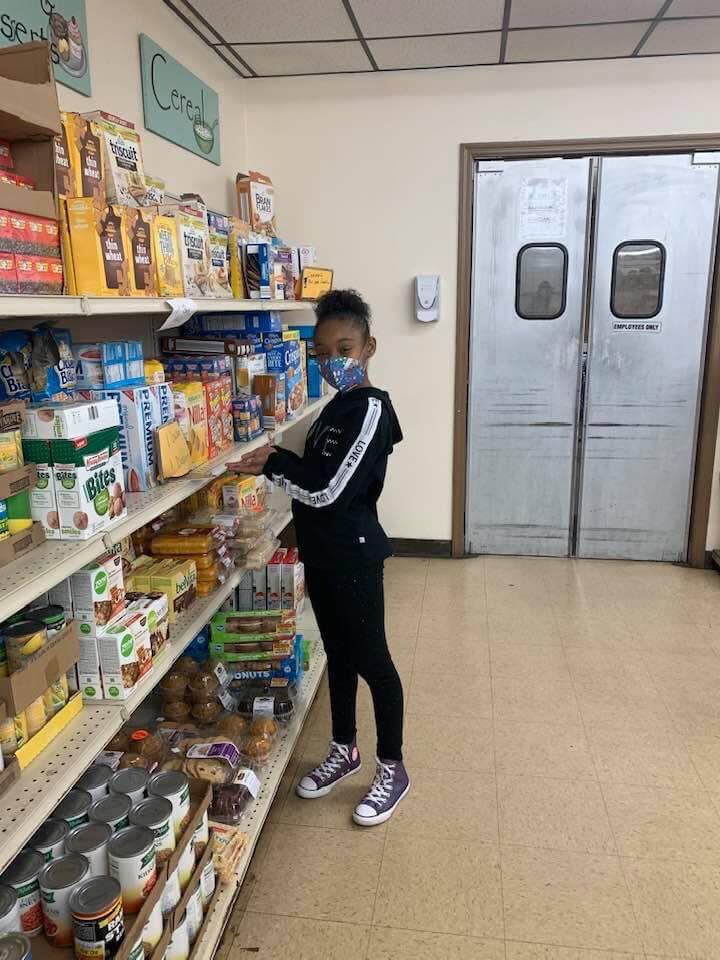Decreased SNAP benefits leads to increased food pantry use
CHILLICOTHE— Ross County food pantries experienced a decrease in food requests during the beginning of the pandemic, but numbers are picking back up after the ending of emergency SNAP benefits.
The Families First Coronavirus Response Act increased SNAP benefits by 15%, but the increase ended in September, leaving families with less food options.

Vince Branson, an assistant at the Zion Baptist Church food pantry, said they had a decrease in clients at the beginning of the pandemic, "because everybody was getting food stamps. But when the food stamps ran out, we've seen an increase."
The Zion Baptist Church food pantry distributes boxes of food every second and fourth Tuesday of the month. Before the pandemic, they were giving out about 60 boxes every other Tuesday. When SNAP benefits were increased, the food pantry only distributed about 40 boxes every other Tuesday.
When benefits went back to normal in September, the pantry saw numbers rise again.
"October, it started picking back up again.... Probably about 126 to 130 [boxes for the month]," Branson said. "In November we had about 160 total."
The St. Vincent de Paul Society food pantry has had a similar experience with the rise and fall of clients during the pandemic.
Mary Elsass, a volunteer at St. Vincent, said the pantry had fewer clients over the summer, but when SNAP benefits decreased clients began returning.
"I think they were still getting a lot of government help... as that began to dry up and we'd see more people," Elsass said. "The need is exploding."
When the pantry began their drive-through food giveaway at the beginning of the pandemic, the church would serve 30 to 40 people. During their last food giveaway event on Jan. 15, the pantry served 189 people and their shelves were left empty.
The Good Samaritan Food Pantry also faced a decrease in clients, with a 40% decrease in clients using the service in 2021 compared to 2020. Unlike the Zion food pantry, The Good Samaritan Food Pantry has not seen people returning as of yet.
"When this pandemic hit, we were warned and had prepped for long lines of people needing the food pantry and we did not experience that," said Jason Link, the Good Samaritan Food Pantry board president.
He said increased government assistance and more organizations stepping forward to help the community are to thank for the decrease in clients. With less people utilizing the pantry, the organization has been able to give out more food per person.
He also attributes the decrease in food pantry users to individual community members helping those in need. Link said that he heard a couple of stories from food pantry regulars about neighbors donating groceries to them during the beginning of the pandemic.
"The neighbor was looking after neighbor and friend was looking after friend and maybe stranger was looking after stranger and providing most basic necessities," Link said. "I imagine some of that still going on."
Branson said that some people may be turning to church food pantries because they are more accessible to the community.
"You just need to live in Ross County, but you don't need a referral to come to us," Branson said.
Link said he is expecting more clients to come to the pantry in the future.
"If and when this pandemic is over and things settle down and government assistance settles down, we're still going to be there to continue to meet the needs that we have here in our community," Link said. "Our doors will still be open and we'll still have our focus of feeding the hungry people of Ross County."
Megan Becker is a reporter for the Chillicothe Gazette. She can be reached at 740-349-1106 or follow her on Twitter @BeckerReporting.
This article originally appeared on Chillicothe Gazette: Food pantries in Ross County have more clients after SNAP benefit decrease

